Mestalla
| Capacity | 49 419 |
|---|---|
| Country | Spain |
| City | Valencia |
| Clubs | Valencia CF |
| Other names | Estadio Luís Casanova (1969–1994) |
| Inauguration | 20/05/1923 (Valencia – Levante, 1–0) |
| Renovations | 1927, 1940, 1959, 1972, 1973, 1998–2001, 2013–2014 |
| Design | Francisco Almenar Quinzá |
| Address | Avenida Suecia, s/n 46010 - Valencia |
Advertisement
Mestalla – stadium description
Why was Estadio Mestalla built?
Estadio Mestalla was inaugurated on May 20, 1923 with a friendly match between Valencia CF and Levante FC. It was the start of a new era for Valencia, which meant saying goodbye to the old venue, Algirós, the club's first home. It was the limitations of the old stadium that prompted the construction of the new venue.
Campo de Algirós was built in 1919, next to the road of the same name. Already in 1922, the stadium was found to be too small and difficult to expand due to the proximity of the stone stands to the small sized pitch. The land for the new stadium cost 316,439.20 pesetas. The project was entrusted to architect and club member Francisco Almenar Quinzá, while construction was managed by Ramón Ferrer Aguilar.
Where does name Estadio Mestalla come from?
The name Estadio Mestalla comes from the irrigation canal Acequia de Mestalla.
This is an open ditch that in the past was used to transport water for agricultural purposes and to supply the city. Such canals were used in Spain and in the former Spanish colonies in the Americas, particularly in the Andes, northern Mexico and also in the south-western United States, including northern New Mexico and southern Colorado.
Where is Estadio Mestalla located?
Estadio Mestalla is located in Valencia, in the district of El Pla del Real, in the Mestalla subdistrict. The site is located to the north of the city centre, close to the Estadi Ciutat de València (Levante UD stadium). Together with the Nou Mestalla, which is under construction, Estadio Mestalla is the largest stadium in Valencia and the entire region.
The stadium is close to the Valencia Museum of Fine Arts and Gulliver Park. The stadium is accessible by 15 different bus lines, as well as by metro - from Aragón, Facultats or Manuel Broseta stations. In addition, there is a large car park on Avenue d'Aragó.
What did first Estadio Mestalla look like?
The original stadium, measuring 100 metres by 59 metres, could accommodate 17,000 spectators who took their seats in ten wooden stands. There were also five rows of seats and five rows of boxes near the pitch.
Why was it decided to rebuild Mestalla quickly?
After the opening of the new facility, the club began to show its potential in regional competitions, prompting the then board of directors to carry out the first extension in 1927. The capacity of the stadium was increased to 25,000 seats. Francisco Almenar Quinzá and Ramón Ferrer Aguilar were again responsible for the design and implementation.
It was the first time that grass was laid in the stadium, as until then matches had been played on an earth surface. Capacity was increased by the construction of covered stands at a cost of 211,981.70 pesetas. Under the stands on the street side, changing rooms, an infirmary, ticket offices and club offices were located. The second inauguration took place on 23 January 1927.
What changed after the major renovation of Estadio Mestalla in 1957?
A major renovation of the stadium took place in the 1950s. To finance the work, the club took out a loan from Banco Hipotecario and issued bonds with the help of Santiago Bernabéu.
The renovation included the complete reconstruction of the south stand and its access roads, which required the purchase of 501 m² of land. In addition, 30 additional rows were built in the north stand, which was connected to the indoor stand. As a result of these works, the capacity of the stadium increased by 15,000 seats, reaching 45,500 seats. The total cost of the works was around 47 million pesetas.
How did the great flood of 1959 affect Mestalla?
On October 14, 1957, Valencia, including the Mestalla stadium, suffered a major flood on the Turia River. Water and electrical systems were damaged, the stands, offices and the tunnel leading to the changing rooms were flooded. The stadium was rebuilt and some improvements were made. In 1959, artificial lighting was installed in the stadium, which was celebrated with a friendly match between Valencia CF and Stade de Reims.
How did Mestalla change in the 1970s?
In the early 1970s, Valencia CF's sporting performance was improving and the club made its debut in the European cups. The stadium and its surroundings underwent further changes.
In 1972, the club's new headquarters were opened. A year later, the Sillas Gol
stand was created, where the fourteen rows of terraces were eliminated in favour of seating. The possibility of moving the stadium to an area outside the city was also considered, but the project was eventually rejected. In 1978, Mestalla was modernised again in preparation for the 1982 World Cup.
What changed after last Mestalla upgrade at the turn of the century?
The last expansion took place between 1998 and 2001, at the initiative of then president Francisco Roig. It included the addition of three new stands - north, south and central. The plan was to reach a capacity of 70,000, but the final number was 55,000, of which only 52,500 seats were usable. Almost a decade later, the Spanish Supreme Court declared some of the works illegal and ordered their demolition as a precautionary measure.
How has Mestalla changed after 2010?
In 2013, the stadium received a new visual identity to reinforce the club's brand. Work included painting the seats in orange and white and installing a new scoreboard. A year later, the exterior walls of the stadium were decorated with panels depicting the club's successes and profiles of legends such as Mario Alberto Kempes, Gaizka Mendieta, Santiago Cañizares, Rubén Baraja, David Villa and David Silva. In addition, a large statue of an orange bat, visible from Aragon Avenue, has been placed in the stands.
What does Estadio Mestalla look like?
The more than 100-year-old Mestalla stadium has undergone many changes over the years, resulting in the somewhat chaotic layout of the auditorium today. The appearance of the Mestalla was also determined by the cramped plot of land, hence the venue's unusually steep stands.
The main stand, located on the west side, is clearly different from the others. Divided into two tiers, it is the lowest of all, but the only one with a canopy. Its archaic gabled roof is one of the most striking features of the stadium.
The stands on the other sides are divided into three tiers. The eastern stand is slightly higher and its middle level is clearly extended. The stands are equipped with plastic seats in the club's colours: white, orange and black. Due to the extremely steep profile, the entire third tier is equipped with protective railings present in every row.
In the eastern stand, the seats are arranged in the image of a bat, which is present in the club's coat of arms. In addition, the seats have been used to form the inscriptions on each of the stands: Mestalla
(main stand), Amunt
(north), VCF
(east) and Valencia CF
(south). The capacity of the stands is 49,419 spectators.
On the outside, the main stand has longitudinal balconies. On the outside of the other stands, the reinforced concrete skeleton of the structure is visible, partly masked by panels or obscured by banners. Around the three corners (with the exception of the north-west corner) there are also circular towers with spiral ramps that fans can use to reach the higher reaches of the stands.
The main stand houses the club's museum, available to visit when taking the so-called Mestalla Forever Tour,
a tour of the stadium. The official club shop is located in one of the townhouses opposite the main stand.
What is Mestalla Forever Tour?
Mestalla Forever Tour is a guided tour of one of the oldest stadiums in Spain. It includes a tour of the press room, the changing rooms and walking out through a tunnel onto the pitch, hearing the simulated screams of the fans. The guides also share stories and anecdotes about Valencia. Tours cost from €7.50 per person.
How did the name of Mestalla stadium change?
On August 23, 1969, at the request of president Julio de Miguel, the official name of the stadium was changed to Estadio Luis Casanova, in honour of Luis Casanova, who served as club president for two decades. This name remained in force until November 6, 1994, when Casanova himself asked that the stadium be restored to its original name, Estadio Mestalla.
From 1923 to 1969 and 1994 to now, the stadium is called Estadio Mestalla.
Why was it decided to build Nou Mestalla?
In the 2005/2006 season, the Valencia CF authorities decided to build a new stadium to replace existing Estadio Mestalla. An ardent advocate of this initiative was the club's president at the time, Juan Bautista Soler. The decision was preceded by excellent sporting results, including winning the Spanish championship in 2002 and 2004, reaching the final of the Champions League twice (2000, 2001) and winning the UEFA Cup and European Super Cup in 2004.
The design of the new stadium was prepared by the Fenwick Iribarren studio and Arup. The ceremonial presentation took place on November 10 2006. Nou Mestalla was to become the third largest stadium in Spain, but construction work was halted on 25 February 2009 due to the property crisis and the club's financial problems.
What sporting events have taken place at Estadio Mestalla?
The stadium primarily hosts Valencia CF matches. In 1982, three World Cup group stage matches were played at the Mestalla, as well as eight matches during the 1992 Barcelona Olympics. The Spanish national team played many friendly matches here and qualifying matches for six Euro tournaments and two World Cups (1998 and 2006).
The Mestalla has also hosted ten Spanish Cup finals (in 1920, 1929, 1936, 1990, 1993, 1998, 2000, 2009, 2011, 2014) and the European Super Cup in 1980. In March 2019, the stadium was the venue for the club's centenary celebrations, which were commemorated with an exciting match between Valencia CF veterans and the Spanish national team.
What non-sporting events took place at Estadio Mestalla?
During the Spanish Civil War (1936-1939), the stadium ground was used as a concentration camp and scrap yard, which led to considerable damage. The club, with the help of the Royal Spanish Football Federation (RFEF), quickly set about rebuilding the facility, entrusting the task to Valencian architects Manuel and Salvador Pascual Gimeno.
In 2020 and 2021, the stadium served as a food distribution centre for the local Food Bank to help struggling families during the COVID-19 pandemic.
How Mestalla compares to other LaLiga stadiums?
Advertisement
Pictures
-

02.10.2014 © Mark Schofield 
02.10.2014 © Mark Schofield 
02.10.2014 © Mark Schofield 
02.10.2014 © Mark Schofield 
02.10.2014 © Mark Schofield 
08.09.2014 © valenciacf.es 
08.09.2014 © valenciacf.es 
27.10.2013 © Cobra83 
24.09.2021 © stadiumgallery 
24.09.2021 © stadiumgallery 
24.09.2021 © stadiumgallery 
24.09.2021 © stadiumgallery 
26.04.2017 © Jörg Pochert 
26.04.2017 © Jörg Pochert 
26.04.2017 © Jörg Pochert 
26.04.2017 © Jörg Pochert 
26.04.2017 © Jörg Pochert 
26.04.2017 © Jörg Pochert 
26.04.2017 © Jörg Pochert 
26.04.2017 © Jörg Pochert 
26.04.2017 © Jörg Pochert 
26.04.2017 © Jörg Pochert 
26.04.2017 © Jörg Pochert 
04.02.2016 © Bartosz Otorowski, Sonia en Polonia 
04.02.2016 © Bartosz Otorowski, Sonia en Polonia 
04.02.2016 © Bartosz Otorowski, Sonia en Polonia 
27.10.2013 © Felix Fernandez 
25.09.2014 © David Chanzá Téllez 
17.08.2014 © valenciacf.es 
© valenciacf.es 
29.09.2010 © Tracy Weng 
29.09.2010 © Tracy Weng 
08.04.2011 © Patrick Hendriksen 
09.02.2008 © Toni Almodóvar Escuder (cc: by-nc-nd) 
12.03.2010 © Steffen Hüther 
22.04.2007 © Javier Novo Rodriguez (cc: by-nc-sa) 
08.04.2011 © Patrick Hendriksen 
08.04.2011 © Patrick Hendriksen 
30.09.2010 © Tracy Weng 
30.09.2010 © Tracy Weng 
30.09.2010 © Tracy Weng 
29.07.2010 © Simone Damiani (cc: by-nd) 
21.05.2009 © Julen Landa (cc: by-nc-nd) 
08.04.2011 © Patrick Hendriksen 
19.02.2010 © Stephen Morris (cc: by-nc-sa) 
19.02.2010 © Stephen Morris (cc: by-nc-sa) 
19.02.2010 © Stephen Morris (cc: by-nc-sa)
2001-2011:
Related news
2025
-
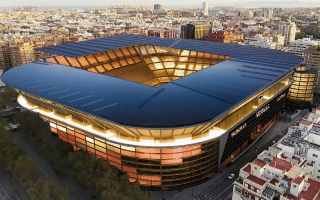
Spain: “Sempre Mestalla” — plans unveiled for Valencia’s historic stadium renovation
At the end of last week, the “Sempre Mestalla” conference was held at Colegio Guadalaviar, organized by the Libertad VCF association. The goal was to inform Valencia CF supporters about the possibilities of modernizing the Estadio Mestalla.
-
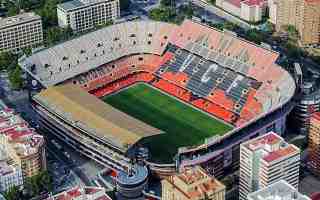
Spain: Valencia attempts (for the third time) to sell iconic Mestalla
It is becoming increasingly clear that the legendary Camp de Mestalla is living out its final years. Valencia CF has put its iconic home up for sale for the third time in order to finance the construction of Nou Mestalla.
-
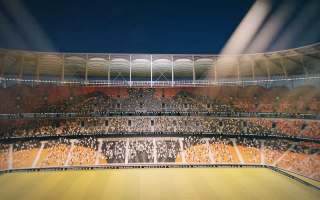
Spain: Valencia CF unveils revenue projections for Nou Mestalla
Valencia CF expects a major financial leap after moving to Nou Mestalla. Tribuna Deportiva accessed an exclusive report prepared by Legends that outlines projected revenues from the new venue.
-
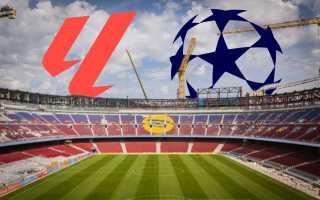
Spain: Barça obtains an essential certificate for Camp Nou and is left with 3 options
FC Barcelona have reportedly obtained the Certificate of End of Works, thus beginning the process of obtaining the necessary permits to return to the Camp Nou. However, it is not clear that the stadium will be ready for the Barça-Valencia game scheduled September 14, and the club is left with three options: Camp Nou, Estadi Montjuic or Estadi Montilivi.
-
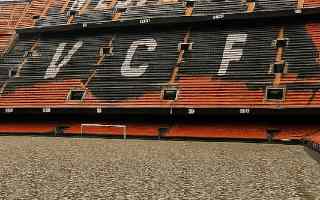
Spain: Valencia introduces a new ban. No more sunflower seeds at Mestalla
Starting from the 2025/26 season, sunflower seeds will no longer be allowed at Mestalla. Valencia CF announced that the decision aims to improve health and comfort in the stands, as well as address problems related to maintaining cleanliness around the stadium.
-
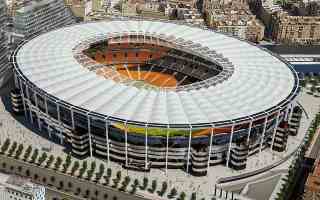
Spain: Valencia CF secures over €322 million to complete Nou Mestalla
Valencia CF has secured full financing to complete the construction of Nou Mestalla. The club finalized its financial strategy through a corporate bond issuance worth €237 million and a 5-year loan of €85 million. The total capital raised stands at €322 million – exactly the amount required to finish the long-delayed stadium project.
-
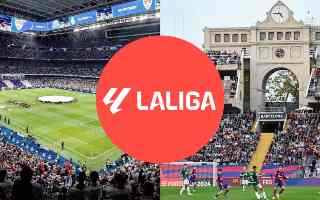
Spain: Attendance at La Liga stadiums in the 2024/25 season
Attendance at La Liga stadiums this season once again broke all records. Most fans came to the Santiago Bernabéu, but it was Barcelona's temporary stadium that was most full. The stadiums of Espanyol, Las Palmas and Getafe were regularly empty.
-

Spain: From history to modernity – Valencia CF and two-stadium dilemma
Valencia CF currently stands at a crossroads. On one side lies the future, embodied by the modern Nou Mestalla; on the other – history and identity, deeply rooted in the current Mestalla stadium, which has been at the heart of the club’s sporting and emotional life for over a century.
-
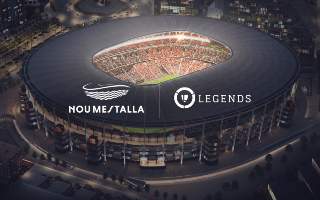
Spain: American firm Legends to run premium areas at Valencia’s stadium
Nou Mestalla is beginning to take shape — not only architecturally, but also in terms of business strategy. The club has reached an agreement with American company Legends, which will be responsible for managing the expanded VIP area of the new venue.
-

Spain: We’re launching in Spanish! A new YouTube channel
Some time ago, we quietly launched our new YouTube channel in Spanish – EstadiosDB. In the first full-length video, we present a ranking of the LaLiga 2024/25 stadiums, from Vallecas to Santiago Bernabéu, with an in-depth analysis of each venue.
-
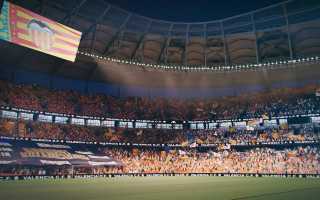
Spain: Valencia fans oppose construction of new stadium
The fan group Últimes Vesprades a Mestalla refuses to give up and continues to believe that Valencia CF will not move to Nou Mestalla.
-
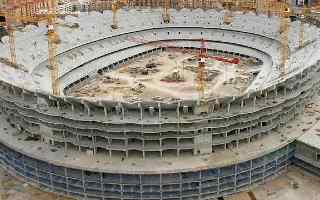
World Cup 2030: Nou Mestalla threatens Malaga and A Coruña's bid
"Two stadiums, one in the south and one in the north, are under threat." The Spanish journalist's words are causing concern on Riazor and La Rosaleda. The return of works at Nou Mestalla and the Spanish federation's diplomatic offensive could lead to the swap of one of the two stadiums.
-
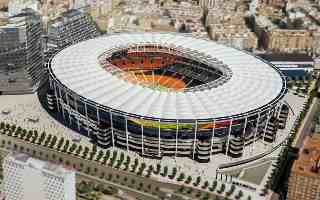
Spain: Valencia resumes work on Nou Mestalla with new project
Sixteen years of stalemate, six projects and six presidents. And then, finally, work on the Nou Mestalla returned yesterday. The stadium is supposed to be a "monument" and a "beacon of hope," but the club and the contractor are facing tight deadlines, financial problems and zero public trust.
2024
-
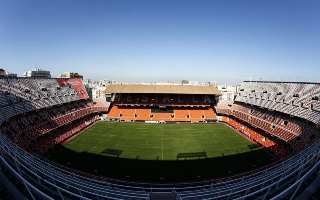
Spain: Opposition calls to empty Mestalla against Real at Mestalla
"We will not be accomplices in the death of Valencia". With these words Libertad VCF, a platform opposing Peter Lim's management, begins a statement calling on Bat fans to take a drastic step.
-
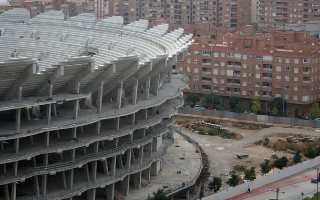
Spain: After 15 years, Valencia announces the return of works at Nou Mestalla
The club denies that the concrete skeleton is in a state of disrepair and clears up doubts: staying at Mestalla is not an option. In the midst of an atmosphere full of tensions, president Lay Hoon Chan announces the return of the machinery to Nou Mestalla.
-
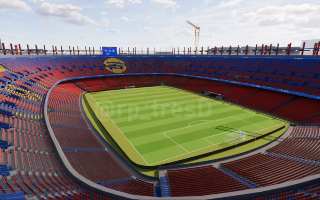
Spain: Camp Nou unfinished. FC Barcelona searches for another temporary stadium
The FC Barcelona board acknowledges that the first team will not return to Camp Nou this season unless a miracle occurs, though no one believes in such a possibility anymore. Construction work is progressing slower than anticipated, and many issues remain unresolved.
-
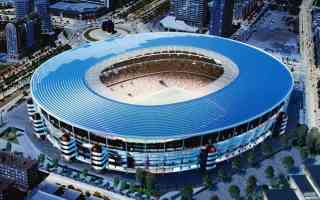
Spain: Nou Mestalla project poses a safety risk?!
The group Últimes Vesprades a Mestalla has approached the Valencia City Hall requesting a technical opinion on the Nou Mestalla project’s executive design.
-
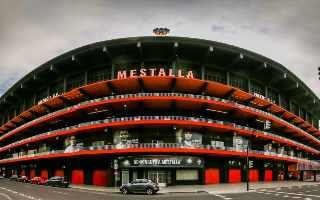
Spain: Cheaper and faster. Modernisation of Mestalla in figures
An event held at the Col·legi d'Arquitectes de València brought together five leading experts in economics, architecture, and financial law to highlight the shortcomings they see in the project for Valencia’s new stadium.
-
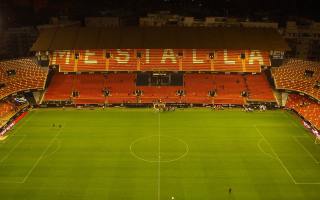
Spain: Valencia without a new stadium? Renovation of Mestalla possible
The collective "Últimes Vesprades a Mestalla" and several architects have called a meeting to present their alternative to resuming work on the Nou Mestalla: remodeling the current stadium. They argue that modernizing Mestalla is "a realistic decision" compared to Valencia's project, whose budget is "insufficient and misaligned".
-
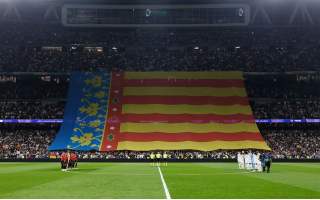
Spain: Spanish football unites to help Valencia after tragic floods
Although many players and coaches asked to suspend all the matches of the last week due to the tragedy caused by the “cold drop” weather phenomenon, La Liga authorities decided to cancel only the matches in the affected areas. Even so, the stadiums ceased to be just temples of football to become examples of solidarity with the survivors.

 StadiumDB
StadiumDB